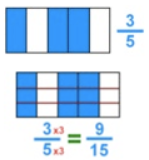REFERENCES
Bauminger, N., & Kasari, C. (1999). Brief report: theory of mind in high-functioning children with autism. Journal of autism and developmental disorders, 29(1), 81–86. https://doi.org/10.1023/a:1025974701090
Baron-Cohen, S., Leslie, A. M., & Frith, U. (1985). Does the autistic child have a "theory of mind"?. Cognition, 21(1), 37–46. https://doi.org/10.1016/0010-0277(85)90022-8
Baron-Cohen, S., Leslie, A. M., & Frith, U. (1986). Mechanical, behavioural and Intentional understanding of picture stories in autistic children. British Journal of Developmental Psychology, 4, 113–125. https://doi.org/10.1111/j.2044-835X.1986.tb01003.x
Brent, E., Rios, P., Happé, F., & Charman, T. (2004). Performance of children with autism spectrum disorder on advanced theory of mind tasks. Autism : the international journal of research and practice, 8(3), 283–299 (p. 286). https://doi.org/10.1177/1362361304045217
Buitelaar, J. K., van der Wees, M., Swaab-Barneveld, H., & van der Gaag, R. J. (1999). Theory of mind and emotion-recognition functioning in autistic spectrum disorders and in psychiatric control and normal children. Development and psychopathology, 11(1), 39–58. https://doi.org/10.1017/s0954579499001947
Dahlgren, S. O., & Trillingsgaard, A. (1996). Theory of mind in non-retarded children with autism and Asperger’s syndrome: A research note. Journal of Child Psychology and Psychiatry, and Allied Disciplines, 37, 759–763. https://doi.org/10.1111/j.1469-7610.1996.tb01469.x
Fitzpatrick, P., Diorio, R., Richardson, M. J., & Schmidt, R. C. (2013). Dynamical methods for evaluating the time-dependent unfolding of social coordination in children with autism. Frontiers in Integrative Neuroscience, 7, Article 21. https://doi.org/10.3389/fnint.2013.00021
Gernsbacher, M. A., & Frymiare, J. L. (2005). Does the Autistic Brain Lack Core Modules?. The journal of developmental and learning disorders, 9, 3–16.
Gernsbacher, M. A., & Yergeau, M. (2019). Empirical Failures of the Claim That Autistic People Lack a Theory of Mind. Archives of scientific psychology, 7(1), 102–118. https://doi.org/10.1037/arc0000067
Gillott, A., Furniss, F., & Walter, A. (2004). Theory of mind ability in children with specific language impairment. Child Language Teaching and Therapy, 20, 1–11. https://doi.org/10.1191/0265659004ct260oa
Happé, F. G. E. (1994). An advanced test of theory of mind: Understanding of story characters’ thoughts and feelings by able autistic, mentally handicapped, and normal children and adults. Journal of Autism and Developmental Disorders, 24, 129–154. https://doi.org/10.1007/BF02172093
Leekam, S. R., & Prior, M. (1994). Can autistic children distinguish lies from jokes? A second look at second-order belief attribution. Journal of Child Psychology and Psychiatry, and Allied Disciplines, 35, 901–915. https://doi.org/10.1111/j.1469-7610.1994.tb02301.x
Moran, J. M., Young, L. L., Saxe, R., Lee, S. M., O’Young, D., Mavros, P. L., & Gabrieli, J. D. (2011). Impaired theory of mind for moral judgment in high-functioning autism. Proceedings of the National Academy of Sciences of the United States of America, 108, 2688–2692. https://doi.org/10.1073/pnas.1011734108
Murray, K., Johnston, K., Cunnane, H., Kerr, C., Spain, D., Gillan, N., . . . Happé, F. (2017). A new test of advanced theory of mind: The “Strange Stories Film Task” captures social processing differences in adults with autism spectrum disorders. Autism Research, 10, 1120–1132. https://doi.org/10.1002/aur.1744
Olderbak, S., Wilhelm, O., Olaru, G., Geiger, M., Brenneman, M. W., & Roberts, R. D. (2015). A psychometric analysis of the reading the mind in the eyes test: Toward a brief form for research and applied settings. Frontiers in Psychology, 6, Article 1503. https://doi.org/10.3389/fpsyg.2015.01503
Oswald, D. P., & Ollendick, T. H. (1989). Role taking and social competence in autism and mental retardation. Journal of Autism and Developmental Disorders, 19, 119–127. https://doi.org/10.1007/BF02212723
Ozonoff, S., & Miller, J. N. (1995). Teaching theory of mind: a new approach to social skills training for individuals with autism. Journal of autism and developmental disorders, 25(4), 415–433. https://doi.org/10.1007/BF02179376
Ozonoff, S., Rogers, S. J., & Pennington, B. F. (1991). Asperger’s syndrome: Evidence of an empirical distinction from high-functioning autism. Journal of Child Psychology and Psychiatry, and Allied Disciplines, 32, 1107–1122. https://doi.org/10.1111/j.1469-7610.1991.tb00352.x
Ponnet, K., Buysse, A., Roeyers, H., & De Corte, K. (2005). Empathic accuracy in adults with a pervasive developmental disorder during an unstructured conversation with a typically developing stranger. Journal of Autism and Developmental Disorders, 35, 585–600. https://doi.org/10.1007/s10803-005-0003-z
Roeyers, H., Buysse, A., Ponnet, K., & Pichal, B. (2001). Advancing advanced mind-reading tests: Empathic accuracy in adults with a pervasive developmental disorder. Journal of Child Psychology and Psychiatry, and Allied Disciplines, 42, 271–278. https://doi.org/10.1111/1469-7610.00718
Russell, J., & Hill, E. L. (2001). Action-monitoring and intention reporting in children with autism. Journal of Child Psychology and Psychiatry, and Allied Disciplines, 42, 317–328. https://doi.org/10.1111/1469-7610.00725
Schneider, D., Slaughter, V. P., Bayliss, A. P., & Dux, P. E. (2013). A temporally sustained implicit theory of mind deficit in autism spectrum disorders. Cognition, 129, 410–417. https://doi.org/10.1016/j.cognition.2013.08.004
Schuwerk, T., Priewasser, B, Sodian, B, & Perner, J. (2018). The robustness and generalizability of findings on spontaneous false belief sensitivity: A replication attempt. Royal Society Open Science, 5, Article 72273. https://doi.org/10.1098/rsos.172273
Senju, A., Southgate, V., White, S., & Frith, U. (2009). Mindblind eyes: An absence of spontaneous theory of mind in Asperger syndrome. Science, 325, 883–885. https://doi.org/10.1126/science.1176170
Spek, A. A., Scholte, E. M., & Van Berckelaer-Onnes, I. A. (2010). Theory of mind in adults with HFA and Asperger syndrome. Journal of Autism and Developmental Disorders, 40, 280–289. https://doi.org/10.1007/s10803-009-0860-y
Tager-Flusberg, H., & Sullivan, K. (1994). A second look at second-order belief attribution in autism. Journal of Autism and Developmental Disorders, 24, 577–586. https://doi.org/10.1007/BF02172139
White, S., Hill, E., Happé, F., & Frith, U. (2009). Revisiting the strange stories: Revealing mentalizing impairments in autism. Child Development, 80, 1097–1117. https://doi.org/10.1111/j.1467-8624.2009.01319.x
Yirmiya, N., Erel, O., Shaked, M., & Solomonica-Levi, D. (1998). Meta-analyses comparing theory of mind abilities of individuals with autism, individuals with mental retardation, and normally developing individuals. Psychological Bulletin, 124, 283–307. https://doi.org/10.1037/0033-2909.124.3.283
Yirmiya, N., & Shulman, C. (1996). Seriation, conservation, and theory of mind abilities in individuals with autism, individuals with mental retardation, and normally developing children. Child Development, 67, 2045–2059. https://doi.org/10.2307/1131608













